By Dan Weisz
The other morning I was out for a walk and saw a small flock of Western Bluebirds on my street. I can’t remember ever seeing these birds in my neighborhood so I ran (actually walked fast) back to my house for my camera. I quickly returned and was pleased to see the flock was still around. Here is one of the males.
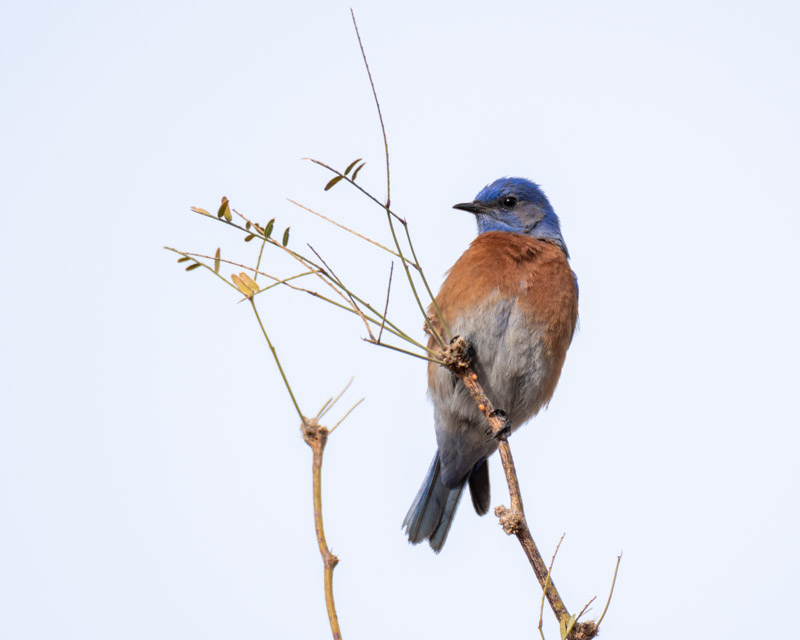
Although they are year-round residents in southern AZ, I hadn’t really seen Western Bluebirds much during previous years. During summers here, they live at high elevations in the mountains. They are fairly common during the winter in lower elevations. This winter, thanks to Covid, I have been out in parks, in different places in the Foothills, and walking around town much more than usual and I’ve seen many Western Bluebirds in small groups in a number of places.
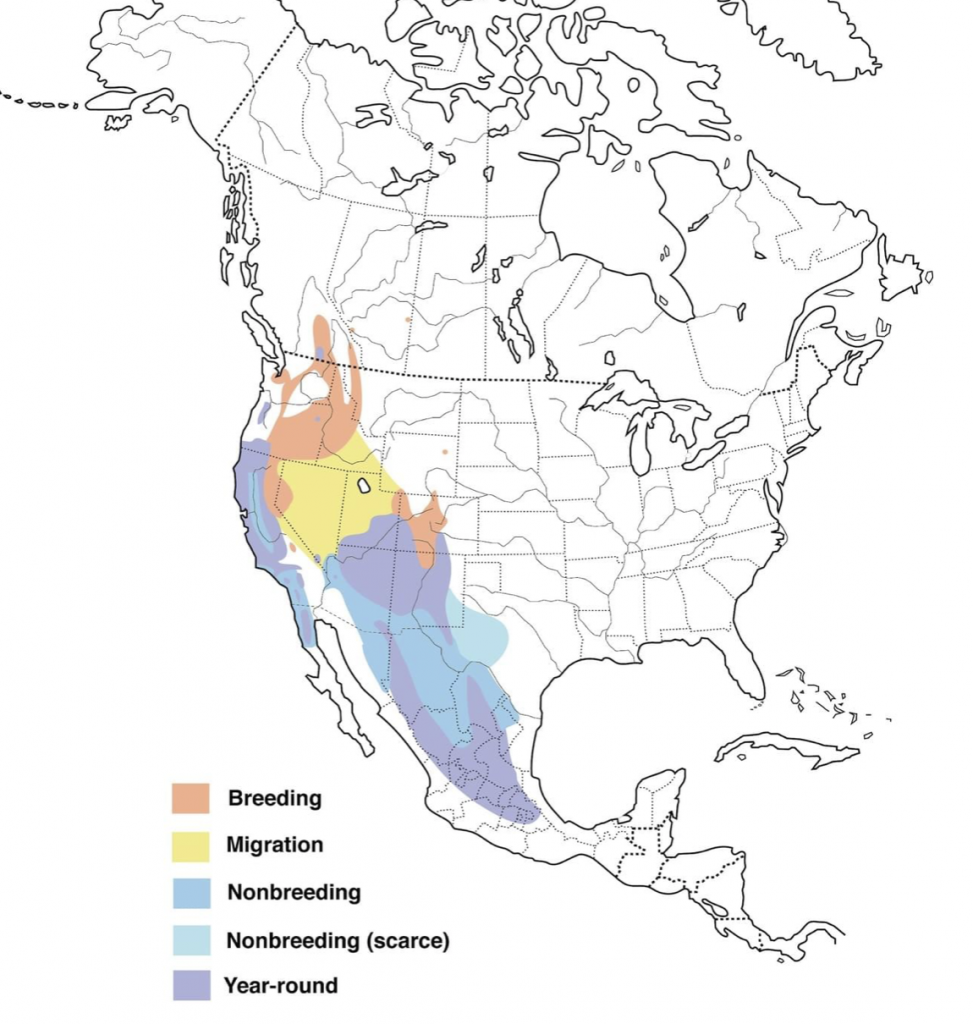
Western Bluebirds are shiny blue, rust/orange and gray/white. Eastern Bluebirds have a rusty throat while Westerns, like the bird below, have a blue throat. Western Bluebirds have a thin bill and a short tail. They usually perch upright as the bird on the ocotillo below demonstrates. Listen to the Western Bluebird song here: https://www.bird-sounds.net/western-bluebird/
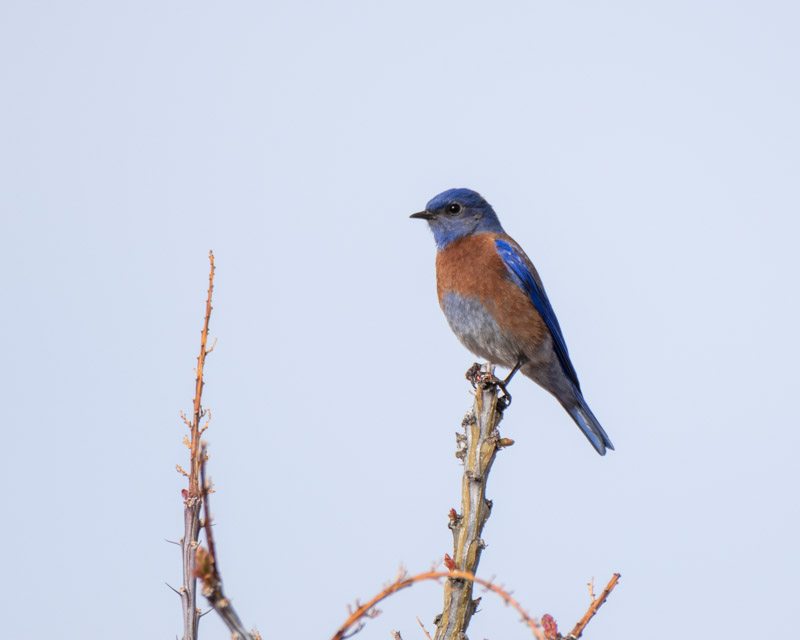
Since Western Bluebirds do not readily come to feeders, many Tucsonans do not see them during the winter. However, as the eBird.org map below shows, they are present throughout the Tucson valley. On this eBird map, a red dot indicates a Western Bluebird sighting within the past 30 days. On many of these dots, there have been multiple sightings by many individuals at that specific location. The blue dots represent sightings over 30 days old, reaching back for many years.
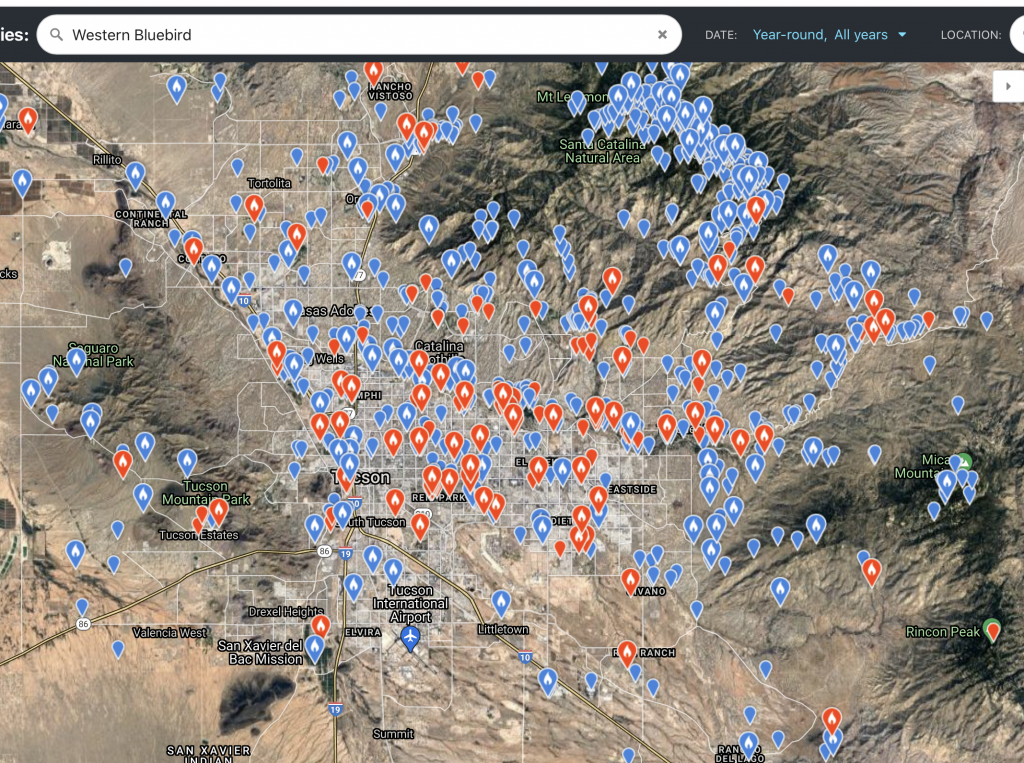
The female Western Bluebird is much duller than the males but shows a similar color pattern. This one landed on a mesquite branch with a small caterpillar. I took this as another sign that Spring is around the corner. I had seen my “first” lizard of the year last week and my first round-tailed ground squirrel, so spring is on its way. During the summer, Western Bluebirds are mainly insect eaters. During winter, they will eat berries or insects.
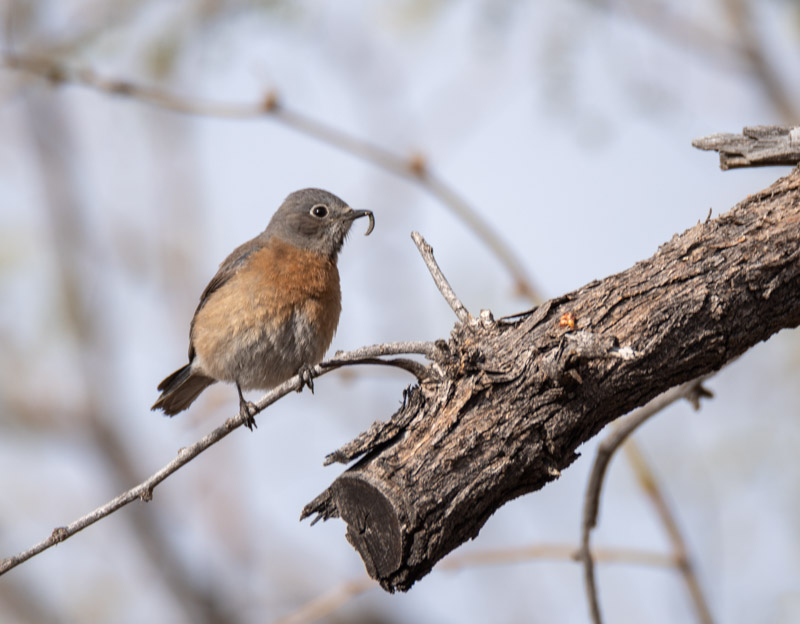
Another male Western Bluebird landed on a mesquite. The flock would fly among several trees in the area, then fly away, and then return. They continued this cycle the entire time I was watching them.
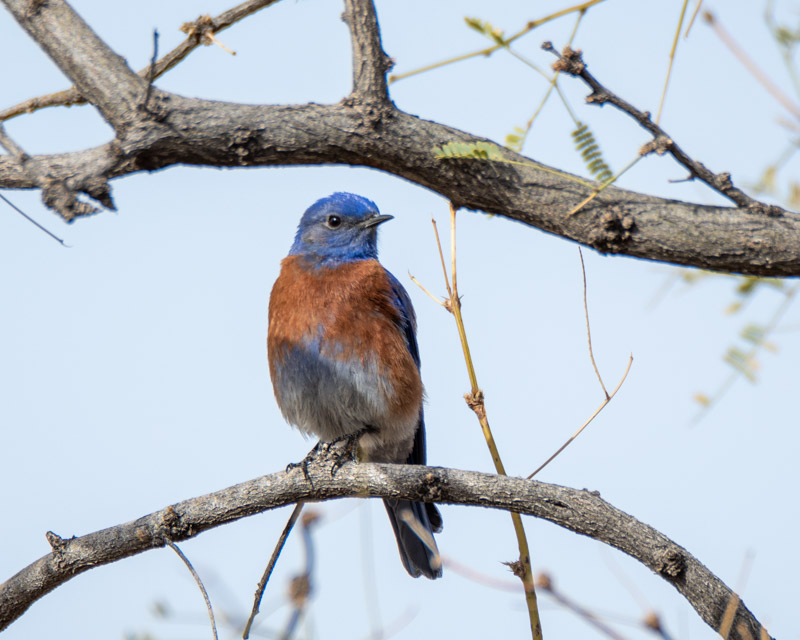
It was a cold morning, and this female was wearing her best down jacket. By fluffing up, the bird is able to trap as much air in their feathers as possible. The more trapped air, the warmer the bird.
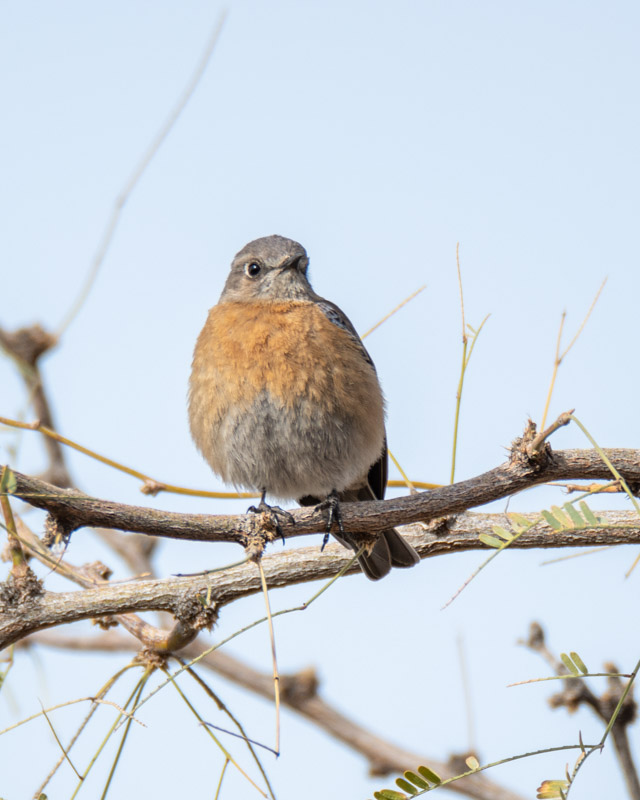
And here is the reason the birds were flying back and forth. In one Palo Verde tree, there was a huge supply of ripe mistletoe berries. The Western Bluebirds would fly into the fruit cluster, feed for a bit, and then fly off to another tree to perch for a while. A few minutes later, they would return to the mistletoe berries. It was interesting to see but frustrating as they always landed on the back side of the mistletoe where I could not see them and could not take their photo. Finally, one bird poked its head out.
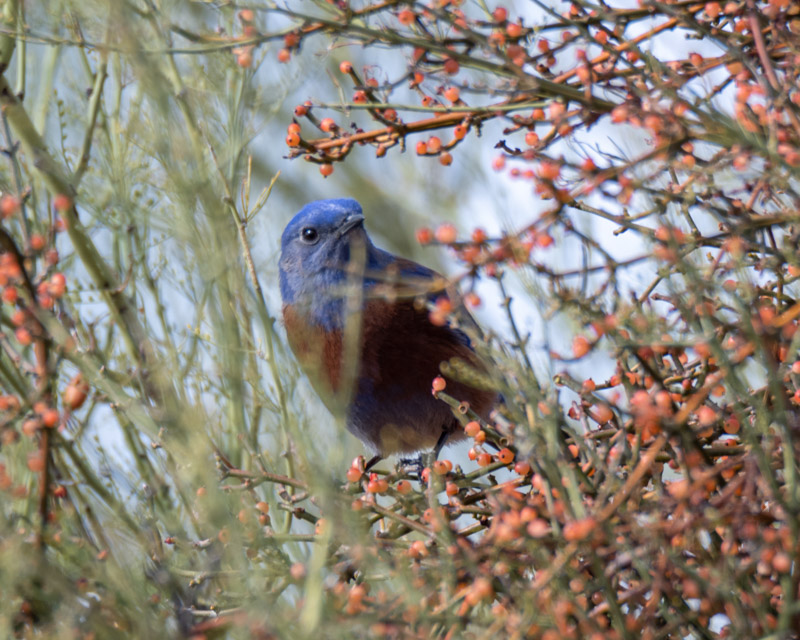
He moved around for a bit before disappearing again.
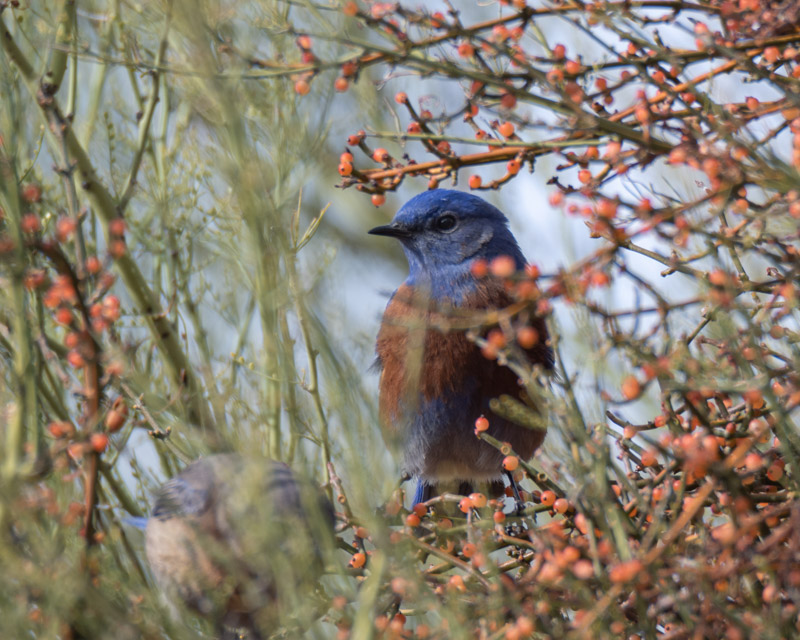
A female Western Bluebird feasting at the back of the mistletoe berry cluster. You can see a hint of blue in her wing and tail feathers in this shot.
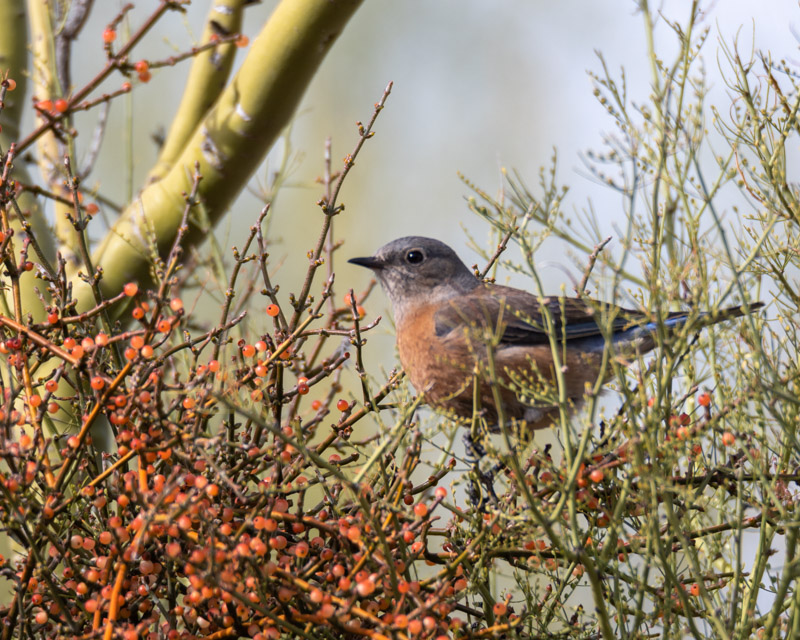
So why are bluebirds blue? As usual, Birdnote supplies the answer: https://www.birdnote.org/listen/shows/why-are-bluebirds-blue
